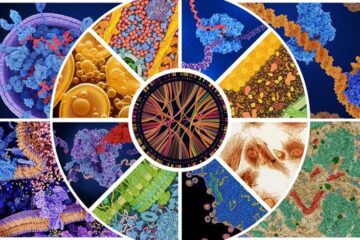Antibiotics alter the normal bacterial flora in humans

Microbes researchers highlight drawbacks of antibiotics
Bacteria that are resistant to antibiotics can live in the human intestines for at least one year. Professor Charlotta Edlund from the Karolinska Institutet in Stockholm, Sweden, and Research Professor Pentti Huovinen from the National Public Health Institute in Turku, Finland, are keen to highlight the risks involved in the excessive use of antibiotics.
In their research funded by the Academy of Finland, the two professors are exploring the long-term impacts of antibiotic treatment on the bacterial flora in human intestines. At the same time, they are looking to develop new research methods for studying intestinal bacterial flora. The project is part of the Academy’s Microbes and Man research programme, a joint effort among researchers from Finland and Sweden.
Antibiotic-resistant bacteria are one of the most serious threats to health care. Earlier it has been assumed that the effects of antibiotics disappear within a couple of months and that the intestinal bacterial flora is then restored to normal. Researchers believe that antibiotics also have characteristics which maintain and promote the health of the bacterial flora.
It has now been shown that the antibiotic studied, i.e. clindamycine, continues to have a clearly visible impact up to one year after treatment is discontinued. Even more surprisingly, it has been found that resistance also increases to other antibiotics, such as penicillins, tetracyclines, and macrolides. In other words, the use of one type of antibiotic simultaneously increases resistance to several other antibiotics.
The focus of research at the Karolinska Institutet in Stockholm is upon intestinal anaerobic bacteria that have poor tolerance of oxygen, while researchers at the National Public Health Institute in Turku are studying aerobic bacteria, which also grow in the presence of oxygen.
Media Contact
More Information:
http://www.aka.fiAll latest news from the category: Life Sciences and Chemistry
Articles and reports from the Life Sciences and chemistry area deal with applied and basic research into modern biology, chemistry and human medicine.
Valuable information can be found on a range of life sciences fields including bacteriology, biochemistry, bionics, bioinformatics, biophysics, biotechnology, genetics, geobotany, human biology, marine biology, microbiology, molecular biology, cellular biology, zoology, bioinorganic chemistry, microchemistry and environmental chemistry.
Newest articles

A universal framework for spatial biology
SpatialData is a freely accessible tool to unify and integrate data from different omics technologies accounting for spatial information, which can provide holistic insights into health and disease. Biological processes…

How complex biological processes arise
A $20 million grant from the U.S. National Science Foundation (NSF) will support the establishment and operation of the National Synthesis Center for Emergence in the Molecular and Cellular Sciences (NCEMS) at…

Airborne single-photon lidar system achieves high-resolution 3D imaging
Compact, low-power system opens doors for photon-efficient drone and satellite-based environmental monitoring and mapping. Researchers have developed a compact and lightweight single-photon airborne lidar system that can acquire high-resolution 3D…





















